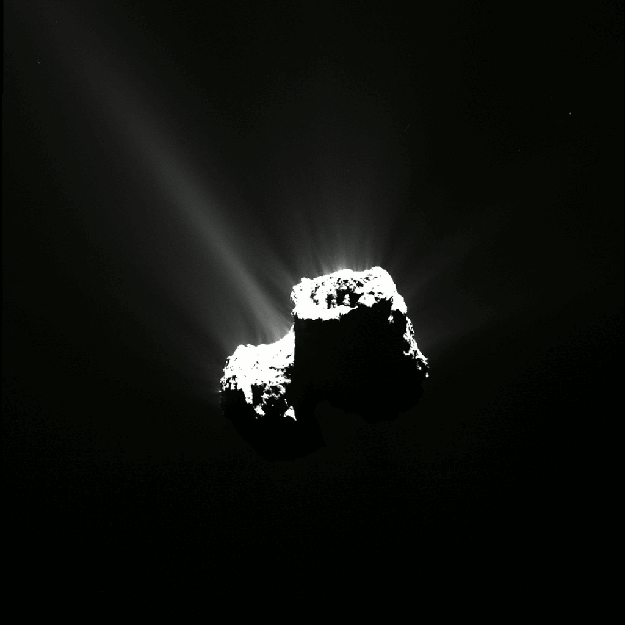Go to the site to see the digital model of Rosetta's Comet. Pretty neat! I'm wondering how long it will take for it to split in two?
To: .30Carbine; 1FreeAmerican; 21stCenturion; 21twelve; 2nd Amendment; 4everontheRight; ...
APOD PING !!!
If you want on the APOD list or off the list, Freepmail me
2 posted on
10/03/2016 7:03:08 AM PDT by
ThomasMore
(We're edging closer and closer to a civil war! Blame the politicians!)
To: ThomasMore
There is a possibility that it is already two pieces just held together by gravity
But a trip around the sun would probably move them apart if that was true
So what do I know anyway...
3 posted on
10/03/2016 7:15:26 AM PDT by
Mr. K
(<a href="https://imgflip.com/i/1adpjl"><img src="https://i.imgflip.com/1adpjl.jpg" title="made at im)
To: ThomasMore
4 posted on
10/03/2016 7:19:46 AM PDT by
ETL
(God PLEASE help America...Never Hillary!)
To: ThomasMore

This series of images of Comet 67P/Churyumov-Gerasimenko was captured by Rosetta’s OSIRIS narrow-angle camera on August 12, 2015, just a few hours before the comet reached the closest point to the sun along its 6.5-year orbit, or perihelion. The images were taken from a distance of about 200 miles (330 km) from the comet. The comet’s activity, at its peak intensity around perihelion and in the weeks that follow, is clearly visible in these spectacular images. Image via ESA/Rosetta/MPS for OSIRIS Team MPS/UPD/LAM/IAA/SSO/INTA/UPM/DASP/IDA
http://earthsky.org/space/rip-philae-comet-lander-faces-eternal-hibernation
5 posted on
10/03/2016 7:38:25 AM PDT by
ETL
(God PLEASE help America...Never Hillary!)
FreeRepublic.com is powered by software copyright 2000-2008 John Robinson


